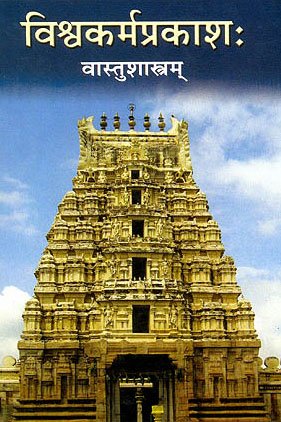Mukhashala, Mukha-shala, Mukhaśāla, Mukhaśālā: 3 definitions
Introduction:
Mukhashala means something in Hinduism, Sanskrit. If you want to know the exact meaning, history, etymology or English translation of this term then check out the descriptions on this page. Add your comment or reference to a book if you want to contribute to this summary article.
The Sanskrit terms Mukhaśāla and Mukhaśālā can be transliterated into English as Mukhasala or Mukhashala, using the IAST transliteration scheme (?).
In Hinduism
Vastushastra (architecture)
Source: Wisdom Library: Vāstu-śāstraMukhaśāla (मुखशाल) refers to a type of temple (prāsāda) classified under the group named Puṣpaka, according to Samarāṅgaṇasūtradhāra chapter 49. The Puṣpaka group contains ten out of a sixty-four total prāsādas (temples) classified under five prime vimānas (aerial car/palace), which were created by Brahmā for as many gods (including himself). This group represents temples (e.g. Mukhaśāla) that are to be square and rectangular or oblong in shape. The prāsādas, or ‘temples’, represent the dwelling place of God and are to be built in towns. The Samarāṅgaṇasūtradhāra is an 11th-century encyclopedia dealing with various topics from the Vāstuśāstra.

Vastushastra (वास्तुशास्त्र, vāstuśāstra) refers to the ancient Indian science (shastra) of architecture (vastu), dealing with topics such architecture, sculpture, town-building, fort building and various other constructions. Vastu also deals with the philosophy of the architectural relation with the cosmic universe.
Languages of India and abroad
Sanskrit dictionary
Source: DDSA: The practical Sanskrit-English dictionaryMukhaśālā (मुखशाला).—entrance-hall, vestibule.
Mukhaśālā is a Sanskrit compound consisting of the terms mukha and śālā (शाला).
Source: Cologne Digital Sanskrit Dictionaries: Monier-Williams Sanskrit-English DictionaryMukhaśālā (मुखशाला):—[=mukha-śālā] [from mukha] f. entrance-hall, waiting room, vestibule, [cf. Lexicographers, esp. such as amarasiṃha, halāyudha, hemacandra, etc.]
Sanskrit, also spelled संस्कृतम् (saṃskṛtam), is an ancient language of India commonly seen as the grandmother of the Indo-European language family (even English!). Closely allied with Prakrit and Pali, Sanskrit is more exhaustive in both grammar and terms and has the most extensive collection of literature in the world, greatly surpassing its sister-languages Greek and Latin.
See also (Relevant definitions)
Relevant text
Search found 5 books and stories containing Mukhashala, Mukha-sala, Mukha-śāla, Mukha-śālā, Mukha-shala, Mukhaśāla, Mukhasala, Mukhaśālā; (plurals include: Mukhashalas, salas, śālas, śālās, shalas, Mukhaśālas, Mukhasalas, Mukhaśālās). You can also click to the full overview containing English textual excerpts. Below are direct links for the most relevant articles:
Sripura (Archaeological Survey) (by Bikash Chandra Pradhan)
Vaisnava Temples (2): Rama Temple < [Chapter 2 - The Architectural Panorama]
Siva Temples at Sripura (Introduction) < [Chapter 2 - The Architectural Panorama]
Vastu-shastra (5): Temple Architecture (by D. N. Shukla)
Pallava period (Social and Cultural History) (by S. Krishnamurthy)
Ear Ornaments (Karnabhushana) < [Chapter 4 - Material Culture of the People]
Jain Remains of Ancient Bengal (by Shubha Majumder)
Abandoned Temples/Structural Ruins Containing Sculptural Specimens < [Chapter 5 - Jaina Architectural and Sculptural Remains]
Manasara (English translation) (by Prasanna Kumar Acharya)